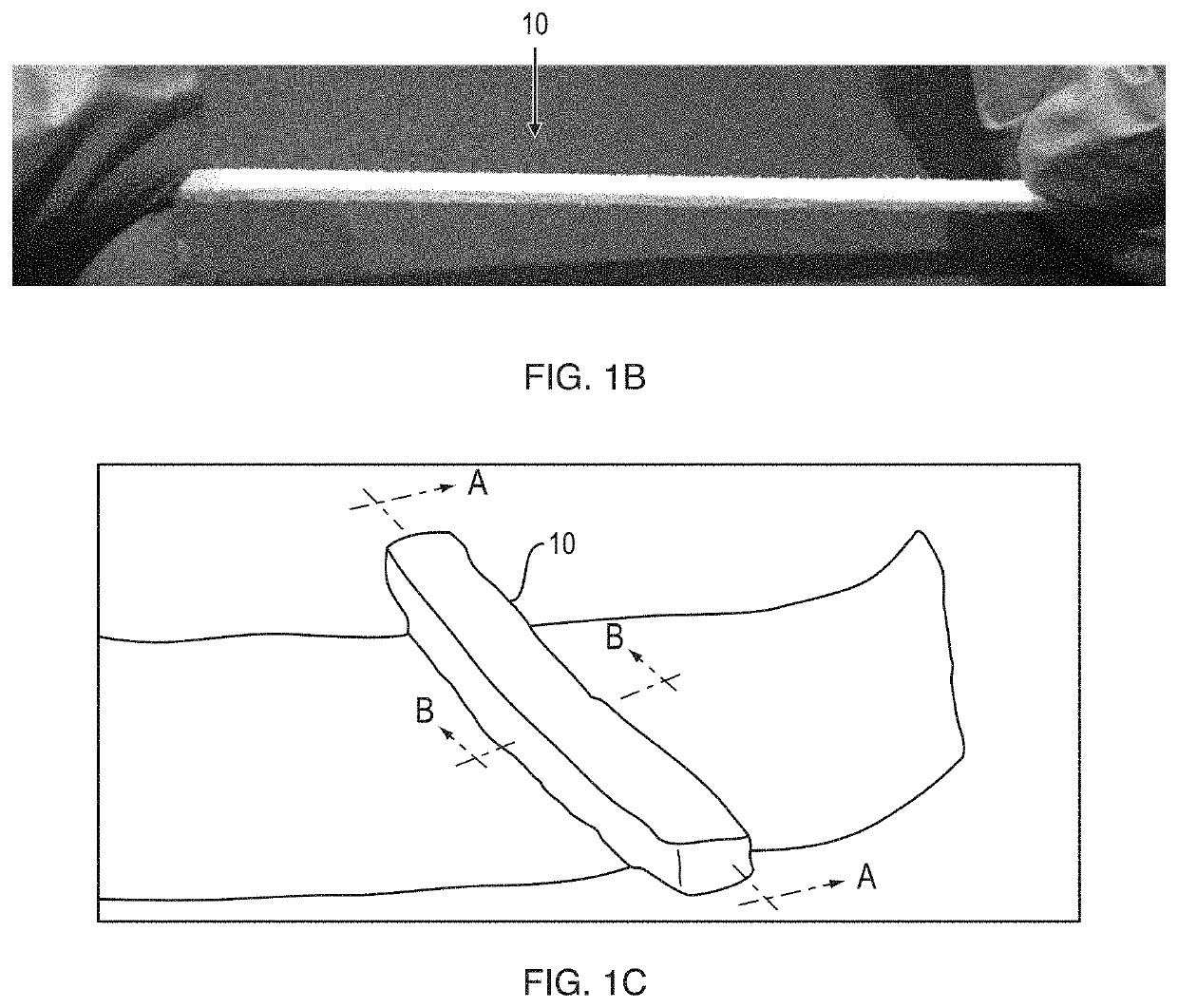Composite scaffold for the repair, reconstruction, and regeneration of soft tissues
a composite scaffold and soft tissue technology, applied in the field of tissue repair and reconstruction, can solve the problems of lack of optimal behavior characteristics, unfavorable regenerative functional tissue, and limited so as to facilitate and accelerate healing and tissue regeneration, and enhance the tensile strength of the scaffold
- Summary
- Abstract
- Description
- Claims
- Application Information
AI Technical Summary
Benefits of technology
Problems solved by technology
Method used
Image
Examples
example 1
[0231]A 75 denier 30 filament poly-L-Lactic Acid (PLLA) yarn was produced for use in manufacture of scaffold fabrics. A warp beam was produced for use in a Karl Mayer Double Needle Bar Machine to produce the fabric. A 5 mm wide fabric of 6 wales across its width and a 23 mm wide fabric with 27 wales across were produced, i.e. using a 22 gauge needle bed. The two surface layers were separated in the Z direction by spacer yarns to make fabrics 2 mm thick. The fabric was scoured in an ultrasonic bath with a mixture of deionized water and iso propyl alcohol and dried.
example 2
re of ACL Augmentation / Repair Device
[0232]A 0.6% collagen solution (by weight) was made up using low molarity Acetic Acid and powder-form Type-1 bovine collagen. This solution was blended and vacuum processed to remove trapped air bubbles. A stainless-steel mold, as shown in FIG. 5A, its cavities filled with a small amount of collagen solution. The textile scaffold from Example 1, a 26 cm long and 5 mm wide sample, were placed into the mold, with textile faces parallel to the bottom of the cavity, and clamps used on each end to secure the textile and prevent movement. Additional collagen solution was filled into the cavities with the textile, completely submerging the textile in collagen solution. The mold with textile and collagen solution was vacuum processed to remove remaining air within the textile to completely infill textile with solution.
[0233]The mold was then placed in an SP Scientific AdVantage Plus Lyophilizer and the samples lyophilized, the lyophilization process takin...
example 3
re of Rotator Cuff Augmentation / Repair Device
[0234]Following the methodology of Example 2 a mold suitable to accommodate a 23 mm wide fabric was used to impregnate 50 mm by 23 mm pieces of fabric from Example 1, but instead using the mold of FIG. 5B. The final device was suitable for use in rotator cuff augmentation or repair
PUM
| Property | Measurement | Unit |
|---|---|---|
| thickness | aaaaa | aaaaa |
| length | aaaaa | aaaaa |
| pore size | aaaaa | aaaaa |
Abstract
Description
Claims
Application Information
 Login to View More
Login to View More - R&D
- Intellectual Property
- Life Sciences
- Materials
- Tech Scout
- Unparalleled Data Quality
- Higher Quality Content
- 60% Fewer Hallucinations
Browse by: Latest US Patents, China's latest patents, Technical Efficacy Thesaurus, Application Domain, Technology Topic, Popular Technical Reports.
© 2025 PatSnap. All rights reserved.Legal|Privacy policy|Modern Slavery Act Transparency Statement|Sitemap|About US| Contact US: help@patsnap.com



